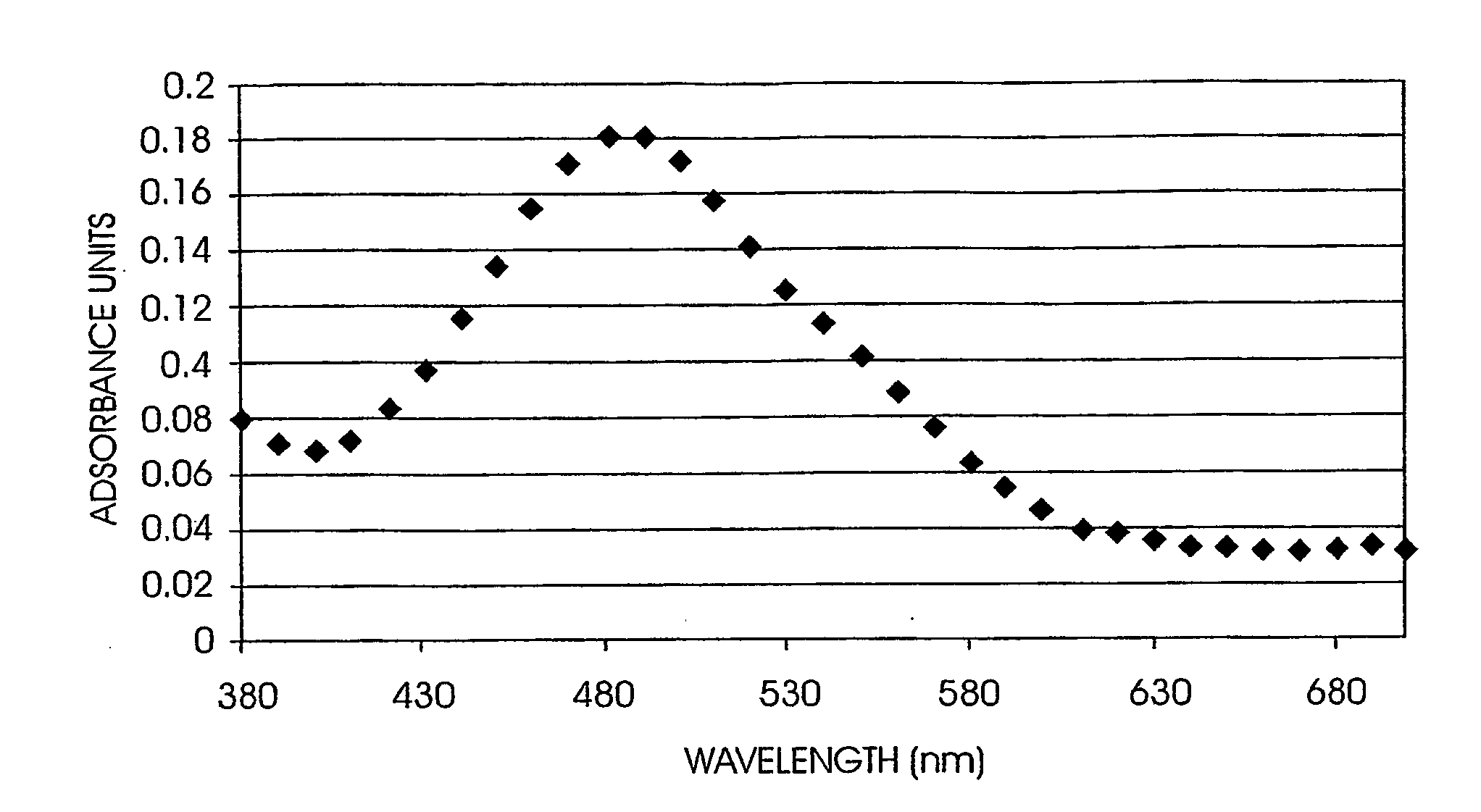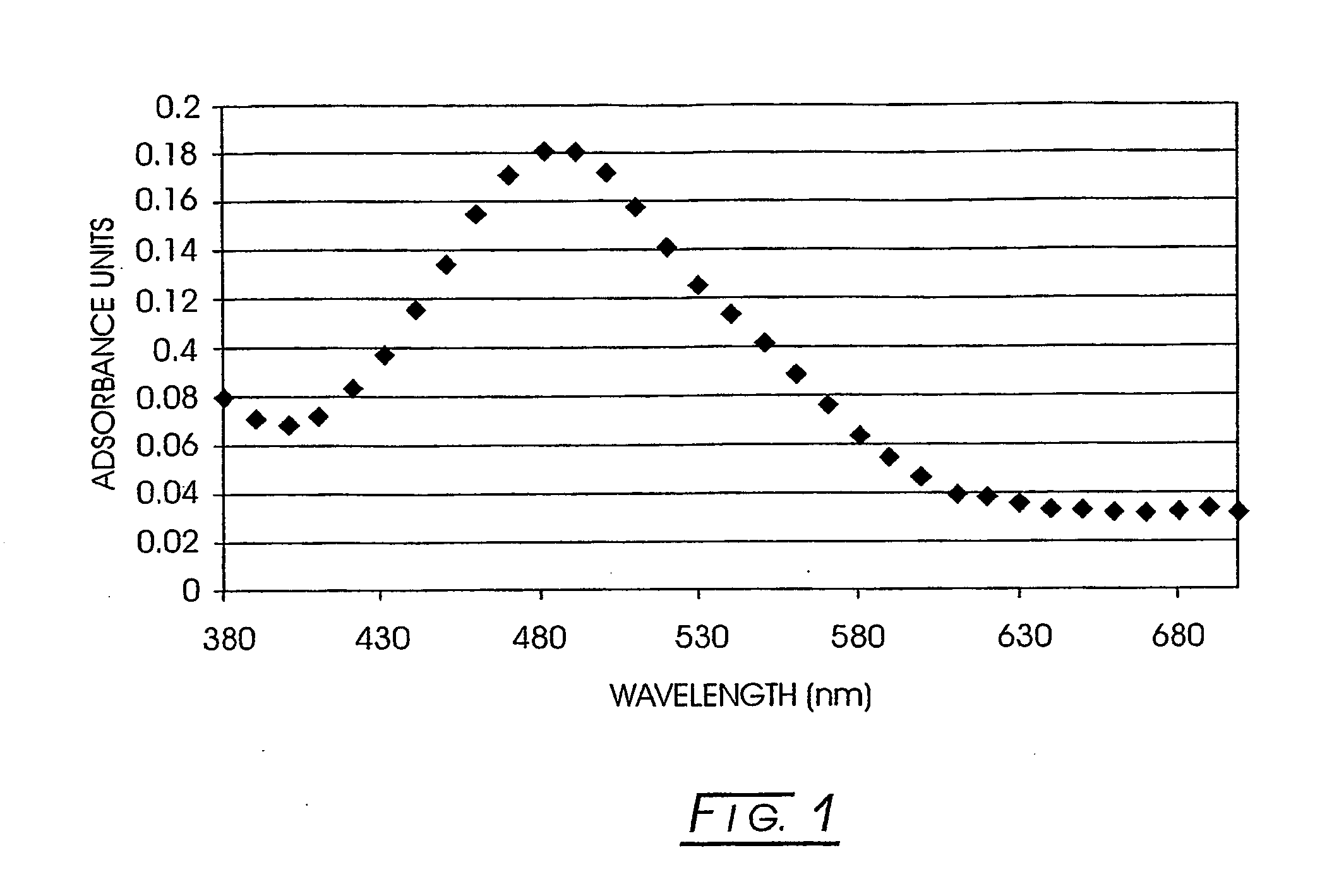Non-linear optically active molecules, their synthesis, and use
a non-linear, optically active technology, applied in non-linear optics, group 4/14 element organic compounds, sulfur dyes, etc., can solve the problems of increased index of refraction of materials and accompanying decrease in light velocity through materials, light scattering, and inability to polarize,
- Summary
- Abstract
- Description
- Claims
- Application Information
AI Technical Summary
Problems solved by technology
Method used
Image
Examples
example 1
Chromophores with Novel Donor Structures
[0079] In this example, we show the preferred structure of the chromophores of this invention. The general structure of these chromophore is shown below, where B is the π-conjugated or aromatic bridge, and A is the π-acceptor. If R1 or R2 contain one or more fluorine atoms, or reactive groups, care must be taken to isolate these groups from the amine to minimize any averse impact on the absorption maximum or dipole moment of the chromophore.
TABLE 9Possible Donor StructuresR1R2Alkane hydrocarbon CnH2n+1,Alkane hydrocarbon CnH2n+1,n = 1-5n = 1-5(Prior art)(Prior art)Alkane hydrocarbon CnH2n+1, n = 1-5 (Prior art)Alkane hydrocarbon CnH2n+1, n = 1-5 (This invention)Alkane hydrocarbon CnH2n+1, n = 1-5 (This invention)Partially fluorinated alkaneAlkane hydrocarbon CnH2n+1,hydrocarbonn = 1-5CnFmH2n+1−m, n = 1-5, m = 1, 2n − 1(This invention)(This invention)Alkane hydrocarbon CnH2n+1, n = 1-5 (This invention)Alkane hydrocarbon CnH2n+1, n = 1-5 (Thi...
example 2
Crosslinkable (Side Chain, Dendritic) Chromophores
[0084] In this example, we show the preferred structure of one class of the chromophores of this invention. The general structure of these chromophores is shown below, where B is a π-conjugated or aromatic bridge, and A is a π-acceptor. If DC1 or DC2 contain one or more fluorine atoms, then A and B can optionally contain fluorine atoms. If neither DC1 nor DC2 contain fluorine, then at least one of A or B must contain fluorine atoms or groups
DC=Donor-connecting link to a polymer backbone
BC=Bridge-connecting link to a polymer backbone
AC=Acceptor-connecting link to a polymer backbone
DC1, DC2, BC, AC each are independently selected from the following:
DC, B, BC, A, AC can each independently be pure hydrocarbon or may contain fluorine atoms as long as at least one does contain fluorine atoms. At least one of the four groups, DC1, DC2, AC, BC must be present for this example. If AC and / or BC are present, then DC1 and DC2 may al...
example 3
Chromophores with Novel Acceptors
[0086] In this example, we show the preferred structure of one class of the chromophores of this invention. The general structures of these chromophores are shown below, where D is a π-conjugated or aromatic donor, and B is a π-conjugated or aromatic bridge.
TABLE 13Examples of Novel Acceptor StructuresX13
[0087]
TABLE 14Examples of Novel Acceptor StructuresX14
PUM
| Property | Measurement | Unit |
|---|---|---|
| refractive index | aaaaa | aaaaa |
| refractive index | aaaaa | aaaaa |
| temperatures | aaaaa | aaaaa |
Abstract
Description
Claims
Application Information
 Login to View More
Login to View More - R&D
- Intellectual Property
- Life Sciences
- Materials
- Tech Scout
- Unparalleled Data Quality
- Higher Quality Content
- 60% Fewer Hallucinations
Browse by: Latest US Patents, China's latest patents, Technical Efficacy Thesaurus, Application Domain, Technology Topic, Popular Technical Reports.
© 2025 PatSnap. All rights reserved.Legal|Privacy policy|Modern Slavery Act Transparency Statement|Sitemap|About US| Contact US: help@patsnap.com



